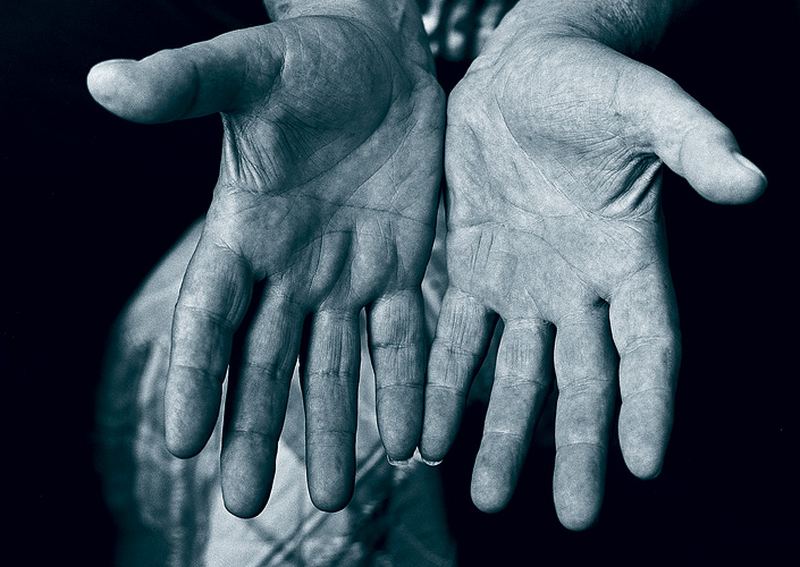
Witness the wonders of Allan Chumak, the white-haired media phenom of the late-Soviet age, who promised to heal from a distance using only his hands, and the television broadcast. The large amber-shaded glasses. The unbroken gaze. Here he is, sitting inside the television box, which is now inside youtube inside your computer, inside your very own home.
To watch Chumak—and I mean really watch him, without interruption or preconception and until the end—is to enter into his world. You have to believe, lest you be left outside—a belief whose compensation is a pleasant sensation, the twilight feeling of sleepy-awakeness, a combination of TV-initiated alpha-waves and gentle hypnosis.
Chumak began appearing on Soviet state television during the late-1980s—the time of “Gorby,” perestroika, socialism with a human face. He was allotted a small, though by no means nondescript, corner of the morning program 120 minutes, at 7:15 am, when people all across the Soviet Union would tune in for some distance healing. Describing the source of his powers, Chumak would describe a magical moment when, at the age of 42, a torrent of energy pummeled his body like a waterfall and the world was revealed to him as a “fantastic diversity of energo-informational interaction.” Since that time, Chumak has been able to focus this “energy” through his hands for the purpose of healing.
There is a certain reliable regularity at work in his programs. First there is the greeting and a brief explanation of the malady du jour—in this case allergy and respiratory disorders. Then there is a discussion of etiology—always for Chumak a disruption of “the harmony of every process in the organism.” Then the proposed resolution, a recalibration through his reiki-like hand movements. The cure takes place right then and there. A sympathetic current of sorts, perhaps aided, back then, by the static electricity gathering on the convex curve of the screen. There is an excess of force, too, though, and viewers are invited, with a mysterious half-smile, to place jars of water or cream (“whatever you like”) next to the television to be “charged” (zariazhennyi; also loaded) (:30). Finally, the recommended pose: “You ought to be free and comfortable…. Place your hands on your lap, arms down, and close your eyes. Only pay attention to those feelings that appear during the session.”
This posture of blindness and relaxation is the posture of faithful submission. It is an embodiment of vulnerability and trust, of innocence and expectation—a posture from which it would be extremely difficult to mount a defense were someone to punch you in the gut.
So much of what we might imagine about time and place—the late Empire moment—has been conjured from out of the smoke and mirrors of capitalist triumph. At the risk of falling prey to a post-Cold War imaginary, twenty-five years hence I imagine all those Soviet bodies in their apartments, stilled before the television. Perhaps it is no coincidence that so many found themselves in this position while living in the twilight of empire. It was the 1980s, after all, and the smell of the end of history was there like a dying animal. Or so it has become: imaginings must be taken, like a shot of bad tequila, with many grains of salt. Others, of course, experienced it very differently—as a chaotic and hopeful time in the Soviet Union. A time of exciting revelation that followed decades of so-called “stagnation” under Brezhnev. Gorbachev had introduced reforms to both the media environment, known as glasnost (literally transparency; openness), and to Soviet institutions (perestroika). People were again able to read more widely; opinions critical of Soviet life became more widely circulated. These new openings brought what anthropologists have documented, retrospectively, as sudden “break of consciousness” (perelom soznaniia) and “strong shock” (sil’neishii shok). Many new cultural forms emerged at this time, but among the most curious was the rise in mass-mediated “extrasensory” healers sent out live via the state broadcasting channel to the entire Soviet Union. Chumak is not alone. There is also Kashpirovsky’s televised hypnotism.
Page 1 of 3 | Next page